

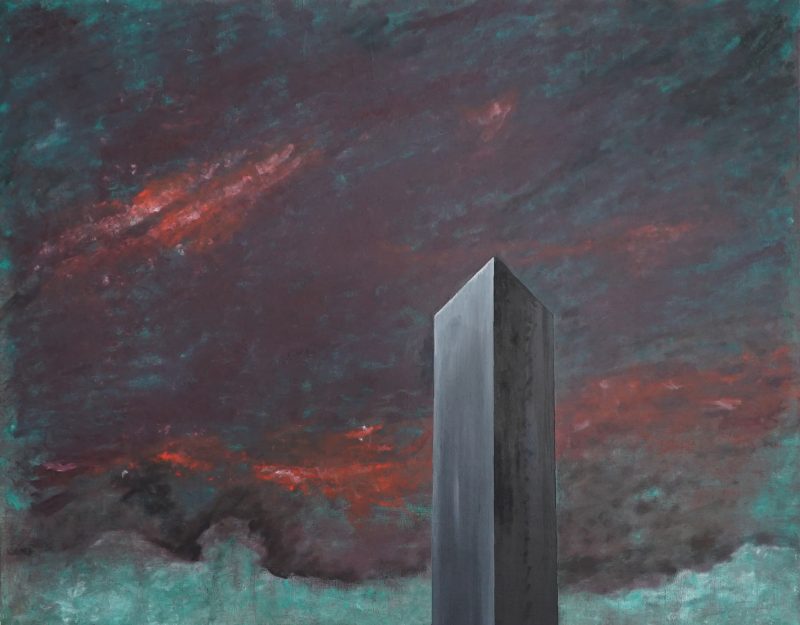






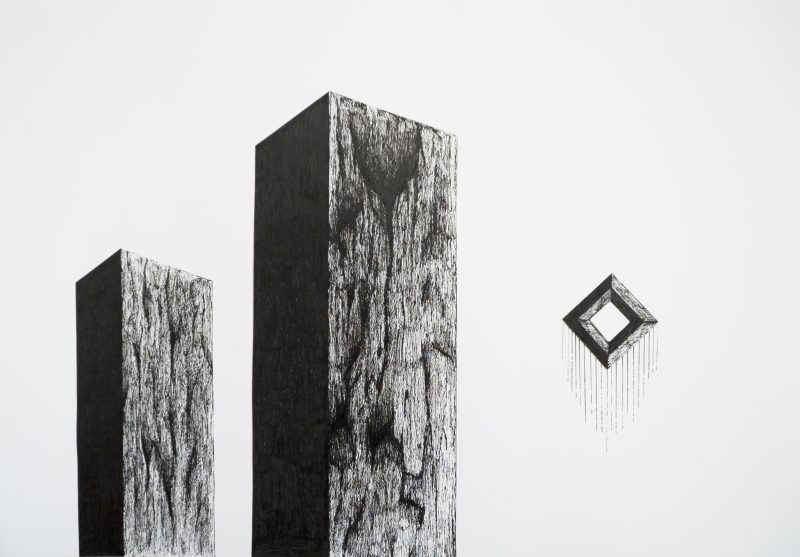





A machinima loop captured inside the post-apocalyptic single-player computer game Fallout 3 made by the U.S. based company Bethesda Game Studios. Part of an investigation into why we play computer games and why we consider some things funnier than others, especially the bizarre and the violent.
Consider the drudgery of repetitive tasks that we see as necessary parts of life. It is interesting that the things we call contemporary entertainment are based on the same types of structures. Comparing work along a factory line with the endless quests for higher levels, better weapons or breathtaking plots are not always that farfetched. How many times would we not define the gameplay as tiring and repeatedly feel the pressure from all of those adventures that lies around the corner?
If comparing the experiences in computer games with the necessities (imagined and real) of a regular job, we indeed have some freedom of choice, considering using the games or not. However, what is it then that makes us use and reuse those experiences contained in prepacked stories when we, in some cases, see no end to the repetition? It may be so that for us so called civilized individuals (domesticated) that these games are, among others, the last line for receiving an intense adrenaline filled emotional release, a catharsis based on the thrill of swinging a virtual gun barrel with a happy trigger finger towards a monster on a frontier in somewhere, close to something.
That the ritualistic repetition indicates an inherent search for something deeper and more profound. It may interpreted as a healthy sign. That we humans have a natural drive for excitement and curiosity. Inevitable this will with time will lead us towards the stars and beyond.
A 2009 collaboration between Gabriel Adrian Adauto Lizárraga, software and game developer from the U.S., and Stefanie Wuschitz, artist and interactive designer from Austria, and the artist Carl-Erik Engqvist. The purpose was first to determine whether it was possible with our different cultural backgrounds to operate and carry out a project together but also as a consequence of this situation to explore different methods for cooperation, especially across professional fields and cultural perspectives.

The project was based on the idea of an interactive installation in the form of a game, that encouraged people to work together to fully understand and enjoy all aspects of it. In the working process of the project we were regularly confronted by problems based on the differences between our professional fields, but also the fact that we represented three different cultures with three different languages. Instead of focusing in solving these problems, originating in the differences, we saw them as an asset and choose to use them and our ideas of solving them in the installation itself.
The Game:
At the first glance the viewers are confronted by two computer stations, a three dimensional starfish with a diameter of 3,5 meters including the six arms but also a variety of different coloured strings that originated from the computer stations but expanded to the entire wall. Some of these strings ended in small notes placed on the wall itself. For convenience we call the two screens A and B.
1. At A (the right screen) the viewer was encouraged to enter his/her name and when doing this he/she got a colour that referred to one of the coloured strings that originated from the screen. If following this coloured strings the viewer ended up with one of the small notes. These contained small stories that in a simple pedagogical way explained the importance of working together.

2. If selecting B directly, the viewer was prompted to enter his/her name but also to choose a colour. Beside this the viewer was directed to also write another player's name and colour. As the computer stations were connected through a network the viewer had to start at A as it was impossible to invent another player and colour at B.

3. Selecting B together with another viewer which already used A, generated clues on the screen that the viewers together could use on A and B.
4. If the viewers did everything right and followed the clues the starfish started up.

The starfish was in itself a game for the viewers that had successfully worked their way through the installation. Through six interactive "warts", on the starfish, equipped with buttons, LED lights and speakers the viewers were forced to once again work together to advance through the levels. The game was based on that the starfish played a sequence of sounds and lights, that then the viewers had to repeat to move on. The sequences got more advanced the further on the viewers played. The more advanced sequences, the more cooperation and involvement of people it needed. The reason we choose a starfish was that the shape in itself both invites, but at the same time prevents cooperation.

An artistic study made in 2011 on the cinematic interpretation of the concept of revelation (existential, spiritual, religious) manifested in the actors facial expressions. The mosaic image is based on the repetion of 100 different images taken from movies and series picturing such a moment, but also in its shape representing one specific good example. This one from "Ofelas" from 1987, directed by Nils Gaup.
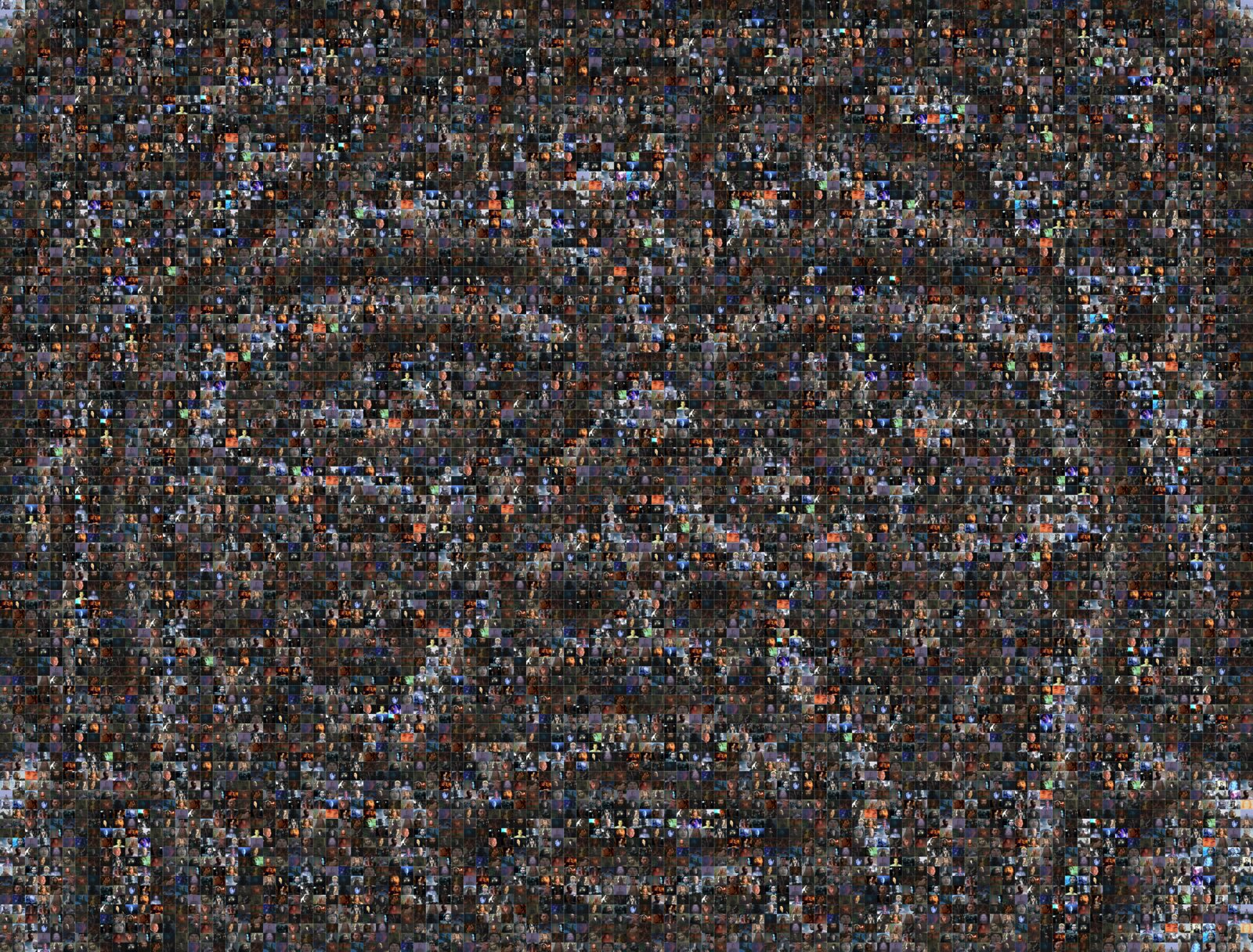
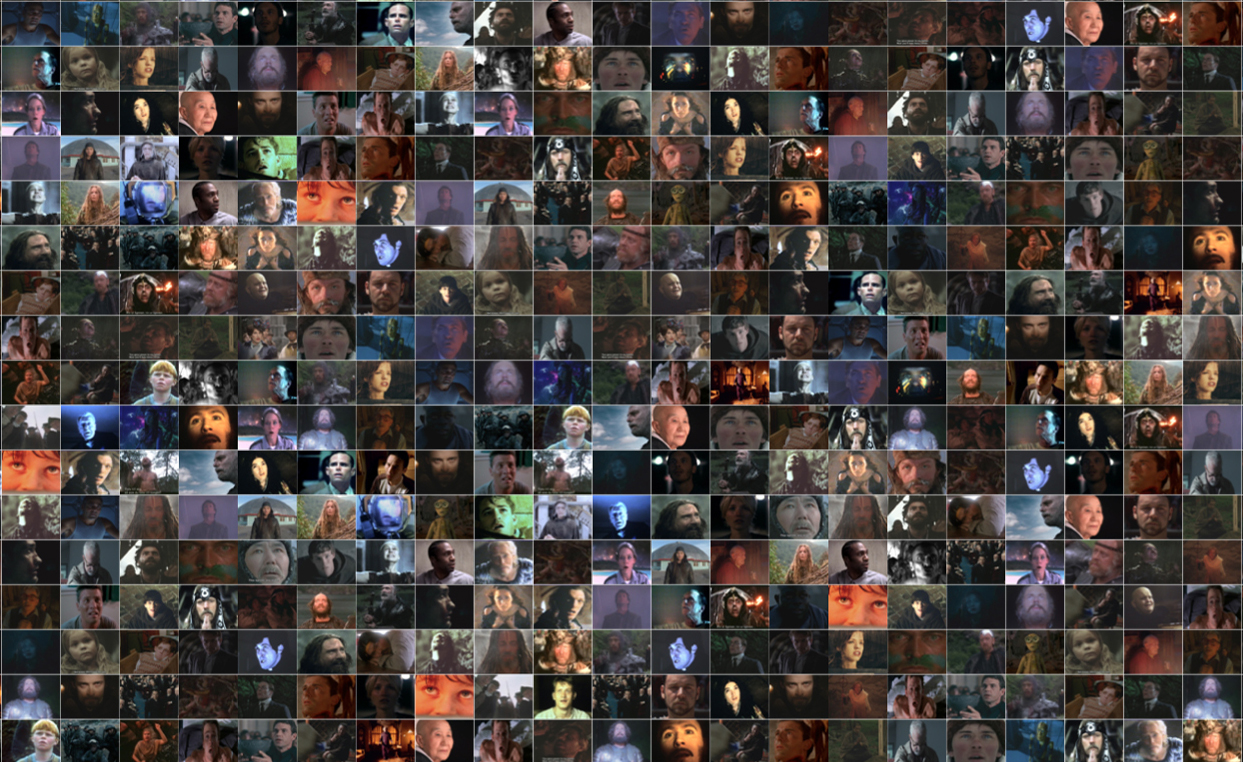
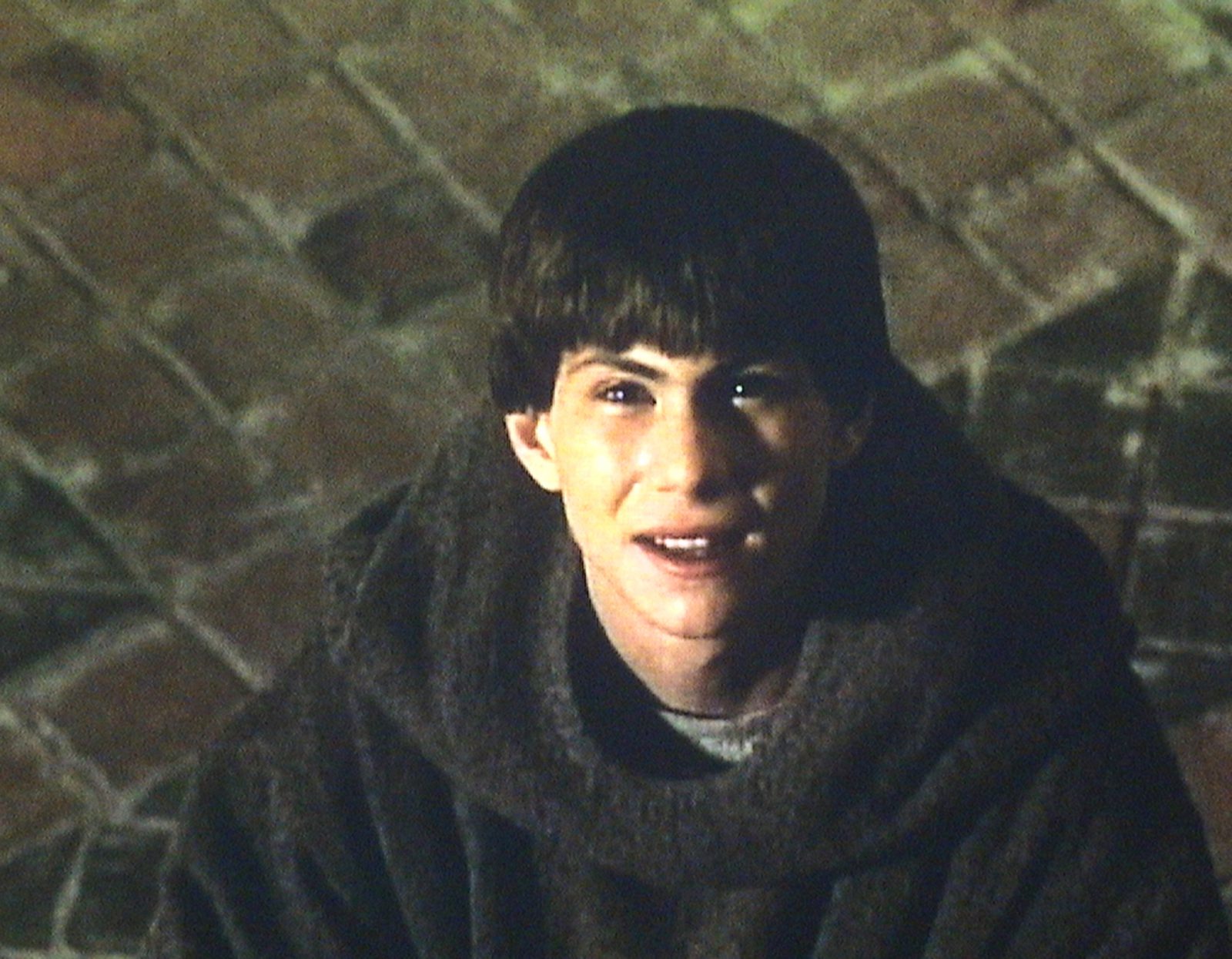
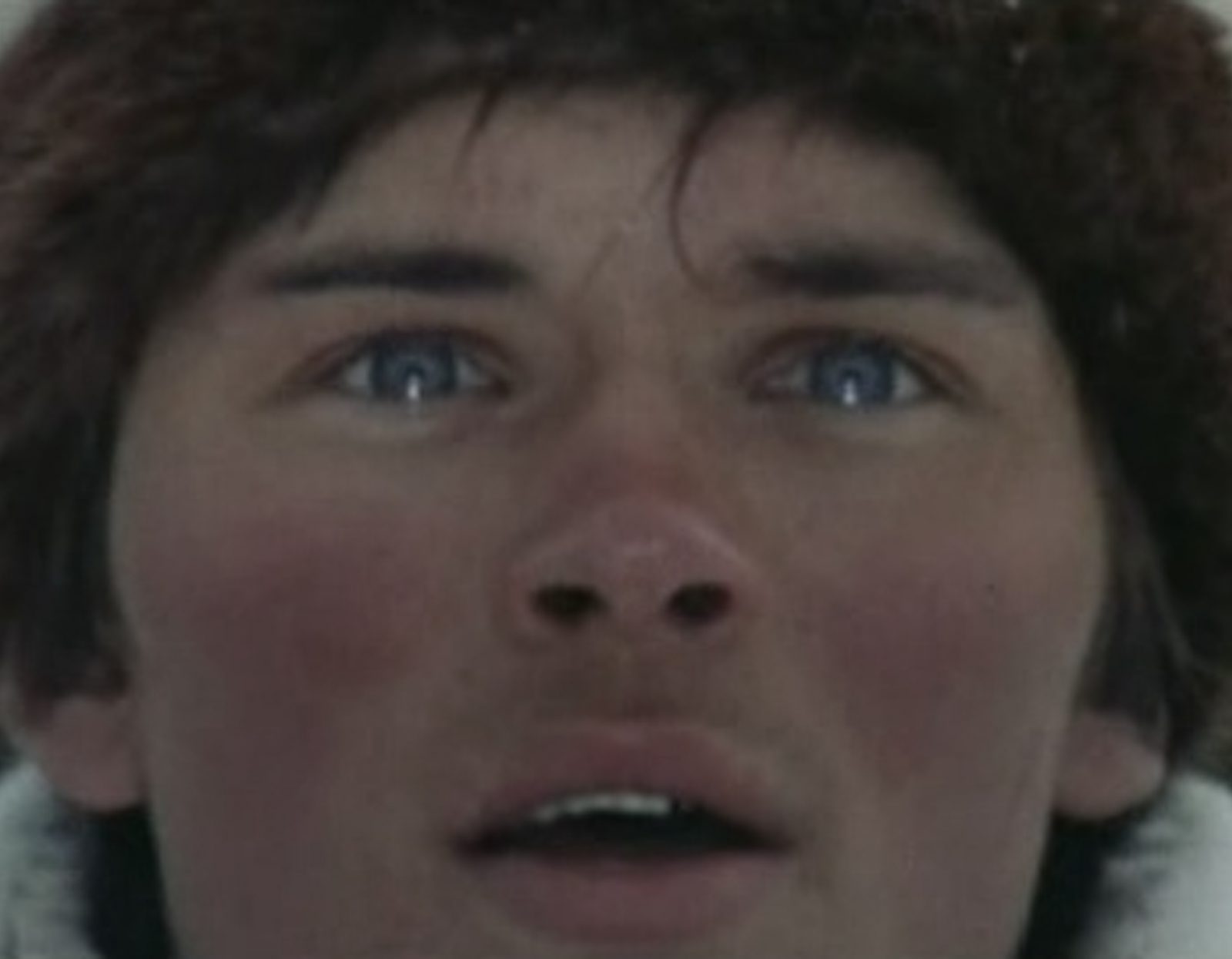
"Crossing the Field" is a machinima loop made in 2009 (a movie recorded inside a virtual world) captured inside the virtual world Planet Calypso, owned by the Swedish company MindArk.
Within this machinima an avatar is trying to cross a field full of monsters. Repeatedly the avatar is killed and transported back to its point of origin where it is revived and forced to start over. The machinima is inspired by Lisbeth Klastrups text "What makes World of Warcraft a World? A note on Death and Dying" which discusses how death is presented in virtual worlds.
Sources:
Digital culture, play and identity, Edited by Hilde G. Corneliussen and Jill Walker Rettberg, The MIT Press, 2008, page 143-166
A series of drawings called "Entropic Particles", from 2008 and forward. Most of them are 60x40 cm. Made with a Staedtler Pigment Liners Marker Pen, if the caption doesn't state the opposite.
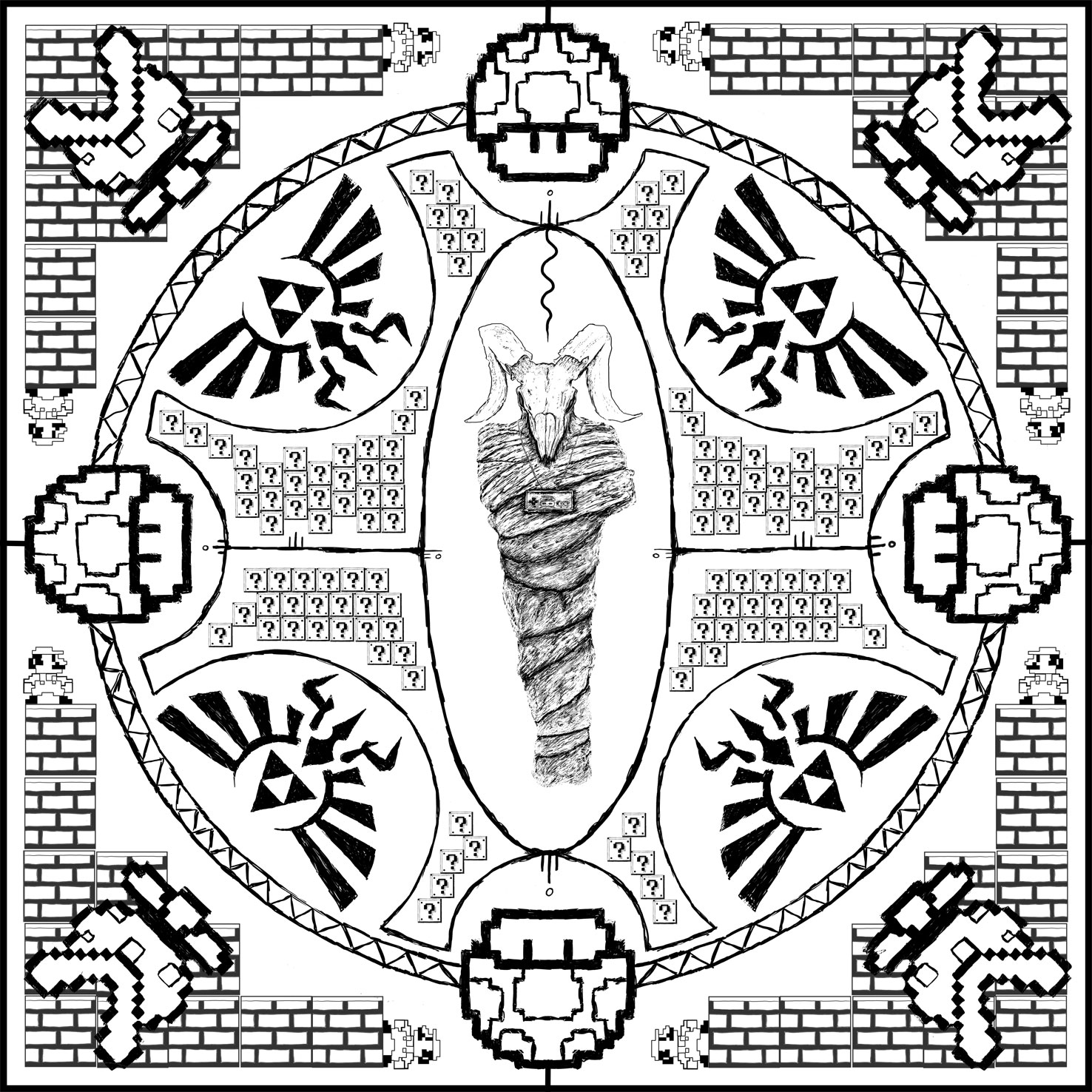
"Etude 4" was a collaboration between Carl-Erik Engqvist, Humlab and Reality Research Center, a Helsinki based performance laboratory. "Etude 4" was part of "12 etudes on everlasting life" which is a series of performative pieces that attempt to find 12 ways to practice a life everlasting. Every month during 2010 a new etude was performed. "12 etudes on everlasting life" was part of Reality Research Centers research plan for 2010.
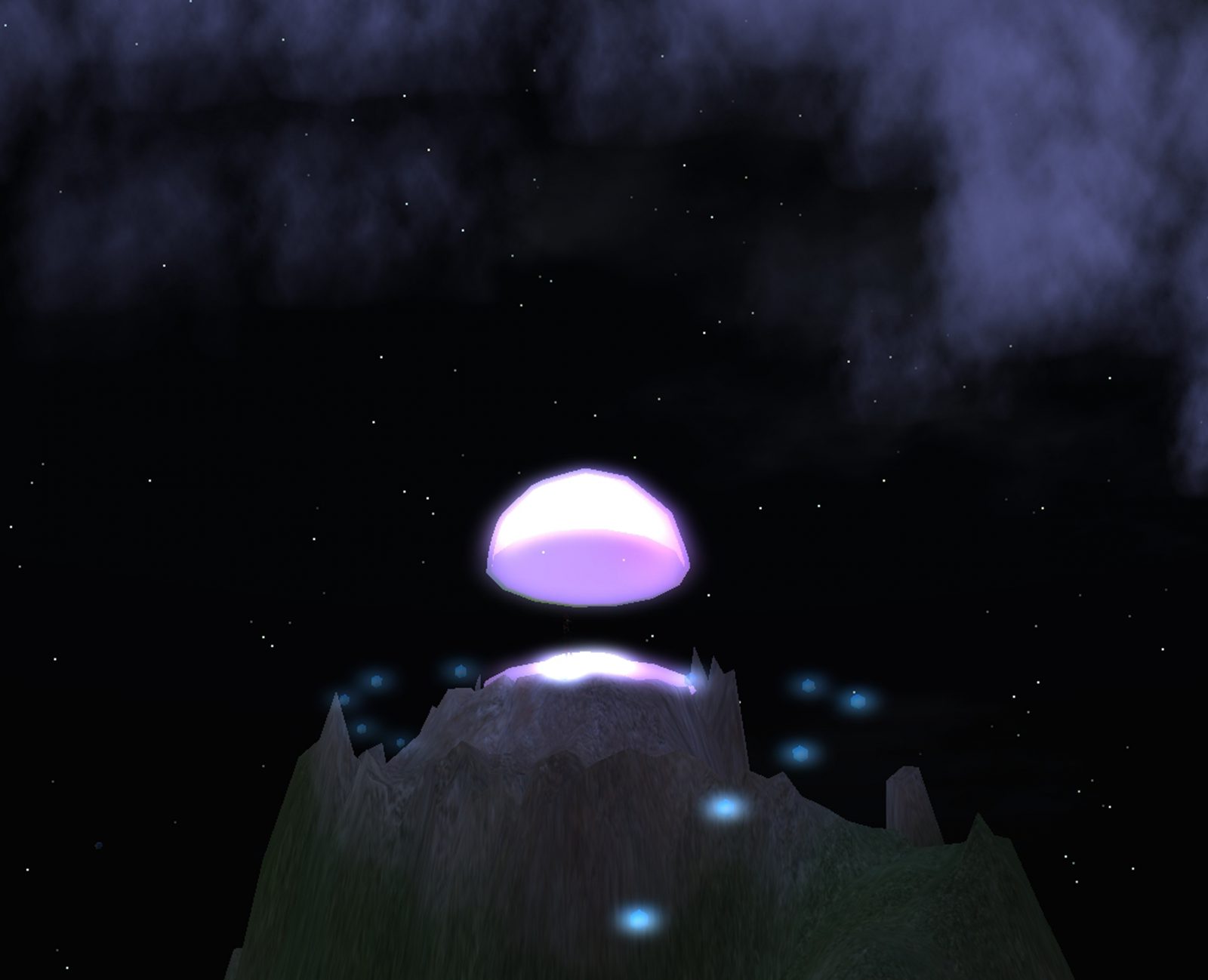
Maybe the greatest issue approached by religions is the ability of humans to survive. Belief and spiritual practice are seen as a way to conquer death by somehow joining divinity. At the same time immortality and eternity are concepts that are hard to grasp. Therefore they are handled through negation – the infinite can only be uttered through pronouncing the finite.
Each etude is created between performance artist Tuomas Laitinen and another artist and will be worked on for 3 uninterrupted days. The etudes are collected into a manual of everlasting life practice.

The subject of the fourth etude was technology and it was performed in HUMlab of Umeå University Sweden on April 28th at 5pm-8pm in 2010 (Swedish time) but a version of that performance will also be available forever in the Temple of Everlasting Life built inside the virtual world Second Life.
The fourth etude was done by Carl-Erik Engqvist and Tuomas Laitinen.
Practice
Level I
Create an new version of you as an avatar, a virtual self.
Move into virtual reality as an avatar.
When in virtual reality, build a site that is participatory and in a state of constant change.
Level II
When the technology for it is available, upload your conciousness to a computer and move to virtual reality permanently.

Performance
An opening ceremony of The Temple of Everlasting Life was held in Humlab of Umeå University on April 28th at 5pm. The ceremonial space contained prayers, a possibility to visit the temple, and the Office, where a statement of belief was presented. By agreeing to the statement, you could also take part in the communion.
The Temple is open forever in the virtual world Second Life. It is accessible through an avatar. If you don’t have an avatar in Second life yet, you can download the program from the same page. Second Life will instruct you on creating an avatar. You will find the The Temple of Everlasting Life on the top of the mountain.
Prayer
[To pray follow these steps:
1. Go to; http://processing.org/
2. Download Processing for your appropriate operating system.
3. Install and start the program.
4. Copy the prayer below into the main window of Processing.
5. Press "Run".]
int width = 1920;
int height = 1200;
float y_offset = 0;
float z_rot = 0;
boolean color_switch = true;
Painter painters[] = new Painter[256];
int ticks = 200;
float z_rot_increase = 0.15;
float y_offset_increase = 0.5;
float ticks_threshold = 18;
void setup() {
size(width, height, P3D);
colorMode(RGB, 1);
background(0.0, 0.0, 0.0);
//smooth();
noStroke();
}
void draw() {
if(ticks > ticks_threshold) {
boolean slot_found = false;
for(int i = 0; i < painters.length; i++) {
if(painters[i] == null && slot_found == false) {
painters[i] = new Painter();
slot_found = true;
if(color_switch) {
painters[i].paint_color = 1;
color_switch = false;
}
else {
painters[i].paint_color = 0;
color_switch = true;
}
}
}
ticks = 0;
}
else {
ticks++;
}
for(int i = 0; i < painters.length; i++) { if(painters[i] != null) { painters[i].draw(); if(painters[i].y_offset > 1200) {
painters[i] = null;
}
}
}
}
class Painter {
float z_rot = 0;
float y_offset = 0;
float paint_color = 1;
Painter() {
}
void draw() {
pushMatrix();
translate(width/2, height/2);
rotateZ(z_rot);
z_rot += z_rot_increase;
fill(paint_color, paint_color, paint_color);
ellipse(0, y_offset, 50, 50);
y_offset += y_offset_increase;
popMatrix();
}
}
Statement of Belief
0
You have predetermined qualities and defects.
You have a limited time of +- 100 years. Your time expires in a steady, monorhythmical pace.
You are constrained in a limited space of approx. 0,4 m3, which is portable at a relatively slow speed.
You need a regular amount of nutrition and lubrication and a waste system.
You are mostly dominated by impulses related to reproduction.
1
You have freedom of individual manifestation, which is not dependent of sex, class, race, sexuality or any predetermined qualities.
Your time is relative, non-chronological and reversible.
You have unlimited space.
You are self-sufficient.
Reproduction is obsolete.
A soundwork from 2009 based on two monologues presented by artificial voices about the state of the multiverse. The text below is the two monologues in written form divided according to the soundwork:
"It is hypothetically true that all of reality consist of a set of multiple possible universes, which also includes our own. This reality is called the multiverse. All structures within the multiverse, which means from the multiverse itself down to the nature of each universe and the relationships between these, are based on the specific multiverse hypothesis considered.
I'm running through a snow-covered forest in the night. Even if I'm naked I don’t feel the cold and I never run out of breath. The light from the moon makes the snow sparkle and the only sounds is my fast breathing, the feet moving through the snow and the wind against my ears. I'm running over a small stream and up on a hill. On the way I startle a hare that runs out in the stream. I chase after it, I catch it and then I bite it. There is a taste of blood in my mouth.
Modal realism is one hypothetical philosophical position about the multiverse that states that possible worlds are a way of explaining probability. Its philosophers, such as David Lewis, believe that all possible worlds exist, and are just as real as the actual world.
In the 48 dimension there exist a group of creatures called hubbalites. When they reveal themselves in our world they are manifested as humanoid, two dimensional dinosaur skeletons that fold in and out of our perception. They treat me a typical hubbalistic candy. It’s a square shaped six-legged spider, with two legs each on three sides and eyes and mouth on the fourth. To my horror it's still alive and the hubbalites explain that it’s supposed to tickle you in the throat on the way down. A physical feeling is for them an exotic pleasure.
The human perception of the multiverse is therefore limited by the aspect of imagination and the language we have for describing it. Consider this then: if the limit of our perception of the multiverse is based on imagination and language, are not examples of different universes already present in the consciousness of the human race? Every product of our imagination should then be considered real, but in other universes.
I’m flying one meter above a beach and its night. The sea is on the right and there are cliffs on the left. All over the place there grows dog-rose bushes and high dry grass. The only sources of light are the full moon, its reflection in the sea and the hundreds of light flies flying all around me. I'm carrying a crucifix around my neck and I'm on the way to the summer camp. In my delirium the summer camp became transformed into the Paradise.
The ability to be a visitor to different universes is therefore always constant and has always been. But this only if you consider our imagination as a gateway into another kind of realism. The closest we have today in experiencing different realities through technology are virtual worlds. Every time a user logs in to virtual world they are partaking of a different universe.
I’m standing at Diana’s grave inside a grove just beside a deserted and decayed house. I'm somewhere in a big city and in the horizon I can see a large bridge and skyscrapers. All of it equally deserted and decayed as the house. From my shoulder bag I extract a small bottle and pour its contents on her grave. She rises from the grave and her eyes are so alive. Suddenly something disappears in them and she starts to rot. Her body collapses and turn to ashes.
But even if our senses tell us otherwise we are conscious that these worlds are simulations and not the actual thing. This insight will stop us from experiencing the virtual worlds with the same catharsis that we can use in this reality. There is only one method of visiting different universes, which we use today, where we cannot distinguish the things we experience there from things we experience in reality.
I discover that the greatest truth ever known will be revealed to me if everyone in the world is dead besides me. This truth is so important that I decide to kill the entire human race. I do this individually and person after person dies by knife, gun, poison or strangulation. When the humans die by my hand the world starts to shrink. The universe, the sun, the planets, the continents disappear and the only thing left is a giant medieval castle without windows and exits. Mad after my bloodbath I roam this castle, until the day I cut myself on a rusty nail and die of blood poisoning. My soul glides through the wall to the afterlife. Imagine a totally hollow upside-down mesoamerican pyramid and in the bottom is the castle. There are an almost endless number of steps up to the surface and every step is full of people I killed. They are sitting there naked and screams madly, soaked in their own whitish shit. It's like a seagull colony. I'm crawling in what feels like an eternity up to the unknown surface. The stench is overpowering, the shit is everywhere and their screams are almost making me deaf. When I finally emerge to the surface I'm staring on a typical middleclass suburb with its small lawns neatly cut. But everything, even the sky and the trees are in different nuances of red and purple. There is not a single human present and the silence is total. This is the afterlife for the rich.
It is dreams that have the ability in fooling ordinary people to believe that the simulated reality, the dream, is the true reality. Therefore are dreams the oldest and for now the best way of visiting different universes within the multiverse."
A relevant comment about the soundwork. The male voice (italic texts) retells some of the artist's dreams.
"From Hand to Mouth to Laser" was an intervention/performance taking place in 2010 investigating the concept of charity in the real cash system based virtual world Planet Calypso but also part of the collaborative paper "Power to the gamer? Or The artist as an activist: intervention as a method to cast a critical eye on the concept of Planet Calypso" which the artist wrote together with art scholar Emma Ewadotter.

The paper was accepted and presented on the 11th Annual Conference of the Association of Internet Researchers (AoIR), in October21-23, 2010, Gothenburg, Sweden and is available here: Power to the gamer? Or The artist as an activist: intervention as a method to cast a critical eye on the concept of Planet Calypso